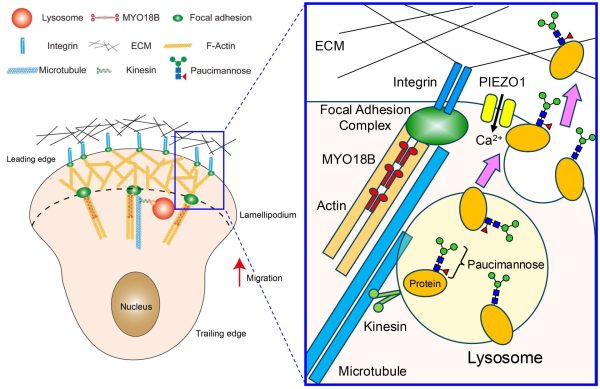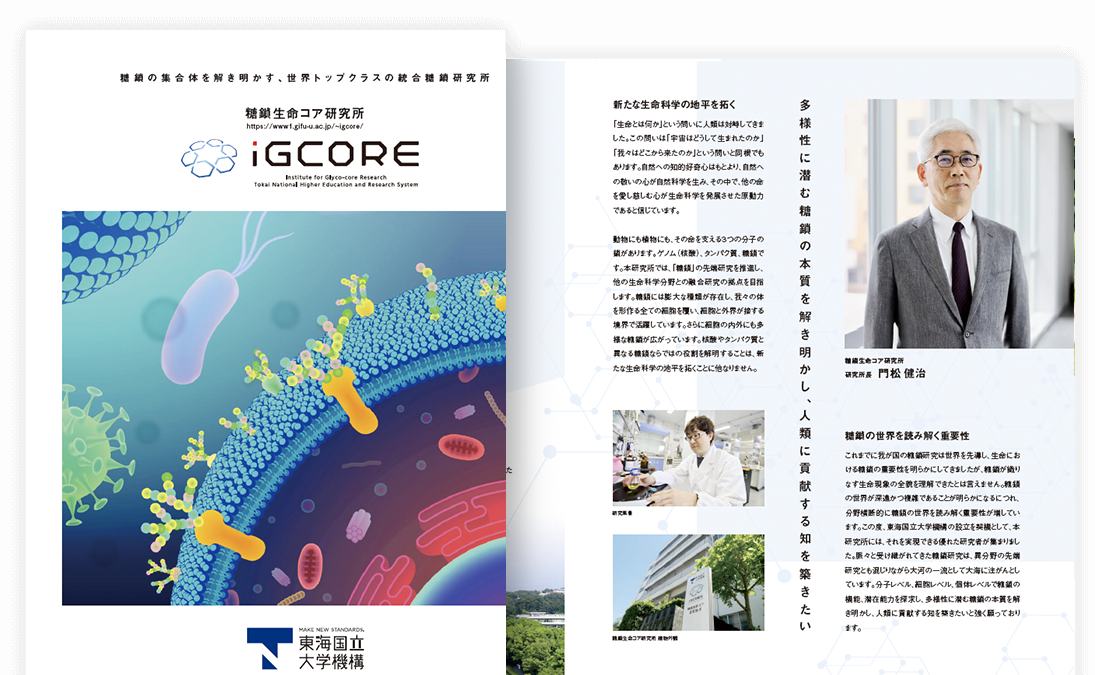A research team led by Professor Morihisa Fujita and Professor Kenichi Suzuki (Institute for Glyco-core Research (iGCORE), Gifu University), Associate Professor Rebeca Kawahara (iGCORE, Nagoya University), Associate Professor Morten Thaysen-Andersen (Macquarie University (also affiliated with iGCORE, Nagoya University)), and Weiwei Ren, a graduate student at Jiangnan University and a special research student at Gifu University, has uncovered a novel mechanism by which paucimannose glycans are expressed on the cell surface and released into the extracellular environment via lysosomal exocytosis.
Key Findings
- Paucimannose glycans are formed within lysosomes and exposed extracellularly through lysosomal exocytosis.
- MYO18B was identified as a key regulator of lysosomal exocytosis.
- In cancer cells, lysosomal exocytosis predominantly occurs near focal adhesions.
In cancer cells, glycan structures on the cell surface are often altered, significantly impacting tumor progression and metastasis. Increased levels of paucimannose glycans—a type of truncated N-linked glycan structure rarely seen in normal mammalian cells—have been observed in many cancer cells. However, the mechanisms underlying their formation and expression on the cell surface remained unclear.
This study reveals that proteins bearing paucimannose glycans are produced in lysosomes and secreted extracellularly through lysosomal exocytosis. Remarkably, this process was found to preferentially occur near focal adhesions, protein complexes that connect the actin cytoskeleton to the extracellular matrix. Genome-wide screening identified MYO18B, a protein involved in actin bundle organization, as essential for focal adhesion maturation and for promoting lysosomal exocytosis, facilitating the release of paucimannose-containing lysosomal proteins into the extracellular environment. Furthermore, PIEZO1, a mechanosensitive ion channel locally activated at focal adhesions, was shown to transport calcium ions critical for lysosome-plasma membrane fusion.
These findings reveal a close relationship between lysosomal exocytosis and focal adhesions, shedding light on the role of paucimannose glycans in the extracellular exposure of cancer cells and the significance of lysosomal exocytosis in tumor progression. The results of this study were published online in Journal of Cell Biology on January 3, 2025.

Figure: Exposure of Paucimannose Glycans via Lysosomal Exocytosis
【Manuscript Information】
Journal: Journal of Cell Biology
DOI:https://doi.org/10.1083/jcb.202407068
Title: MYO18B promotes lysosomal exocytosis by facilitating focal adhesion maturation
Authors: Wei-Wei Ren, Rebeca Kawahara, Kenichi G. N. Suzuki, Priya Dipta, Ganglong Yang, Morten Thaysen-Andersen, and Morihisa Fujita*(*: Corresponding author)





